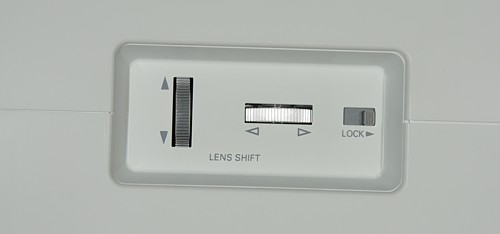Other considerations
Along with the key parameters analyzed above, you should also pay attention to the following moments when you choose a home theater projector.
Interfaces. The number and types of video inputs. Whether there are enough of them and they match prospected signal sources. Perhaps, two or more HDMI inputs will be a significant advantage. However, it's more convenient to plug a single HDMI cable to a projector, and switch video sources with a receiver or an HDMI switch.
Whether there is an output to control the electromechanic screen. Remote control may come in handy from time to time (usually via RS-232C). Some projectors come with USB interfaces and/or card readers to play multimedia content on their own. Wireless interfaces to receive video content will soon become a popular solution.
Video path quality. Video sharpness of an analog connection. Quality of interpolating video to projector's resolution and converting interlaced video into progressive format. Availability of noise suppression. Supported resolutions and frame rates. Geometry transform modes.
Availability of overscan, how it works, and whether it can be disabled. Some High-End projectors offer the interpolation function that uses special algorithms to recreate intermediate frames. This function can make video significantly smoother and movements in a frame much sharper.
Quality of optics. Test patterns easily reveal geometry distortions, chromatic aberrations (color edges of contrast objects) and focus shift across the field (impossible to focus in all projected points). The quality of optics should be evaluated with different positions of the zoom lens, giving preference to positions you intend to use. Projectors always suffer from these problems to this or that degree, but significant deviations from perfection may speak of defects or peculiarities of design. In the first case you may try to replace a projector. In the latter case you should make your decision proceeding from prices and other criteria.

Installation options. What installation options are available. How you can mount a projector on a ceiling bracket (if it's possible). When you know characteristics of a projector and the room, you should determine the best screen size and position of a projector. Besides, you should find out whether you really need the lens shift function. If you do, determine whether its range is sufficient in your chosen model, and how much it deteriorates image quality.
You may use projector's interactive designers, published on manufacturers' web sites or in other trustworthy places, user's guides and tables of characteristics, which you may find in Internet. Note that the optimal distance from a 16:9 screen to viewers is 1.5 of the screen's height.
Maintenance convenience. How you can replace the lamp, clean and replace filters. Whether you have to remove a projector from the mounting bracket. How much the enclosure collects dust or dirt, and whether its surface is easy to clean. Lens protection. Whether the bundle includes a lens cap, convenient or not.
Enclosure design. How well projector blends into interior of your home theater hall. If the room is properly decorated (dark ceiling and walls), black enclosures may be preferable.
Remote control ergonomics. Whether it lies conveniently in your hand and you can find necessary buttons by touch. Availability of illumination. If it's present, is it sufficiently bright? Are there any other useful features? For example, LED flashlight as in InFocus Play Big IN82 or possibility to control other devices as in Panasonic PT-AE2000E.
Menu ergonomics. Readability, navigation convenience, localization, convenience of image adjustment parameters, profile management.
Bundle. Along with the necessary remote control and guides, projectors may come with cable caps, original stands, etc. Video cables, especially of high quality, are rarely included into bundles.
Thus, you have to consider a lot of factors, if you want to take your choice seriously. First of all you should decide on the key parameters, taking into account properties of your room and your resources. Then you narrow down the choice with minor features. Your initial criteria may be reviewed at any stage, which will take you to the first step again. There is no such thing as a perfect projector, you always have to find a compromise. We hope that the article will come in handy to those users who are looking for a home theater projector. Besides, some of our readers may decide they want one instead of a TV set or as an addition to it.
Write a comment below. No registration needed!





